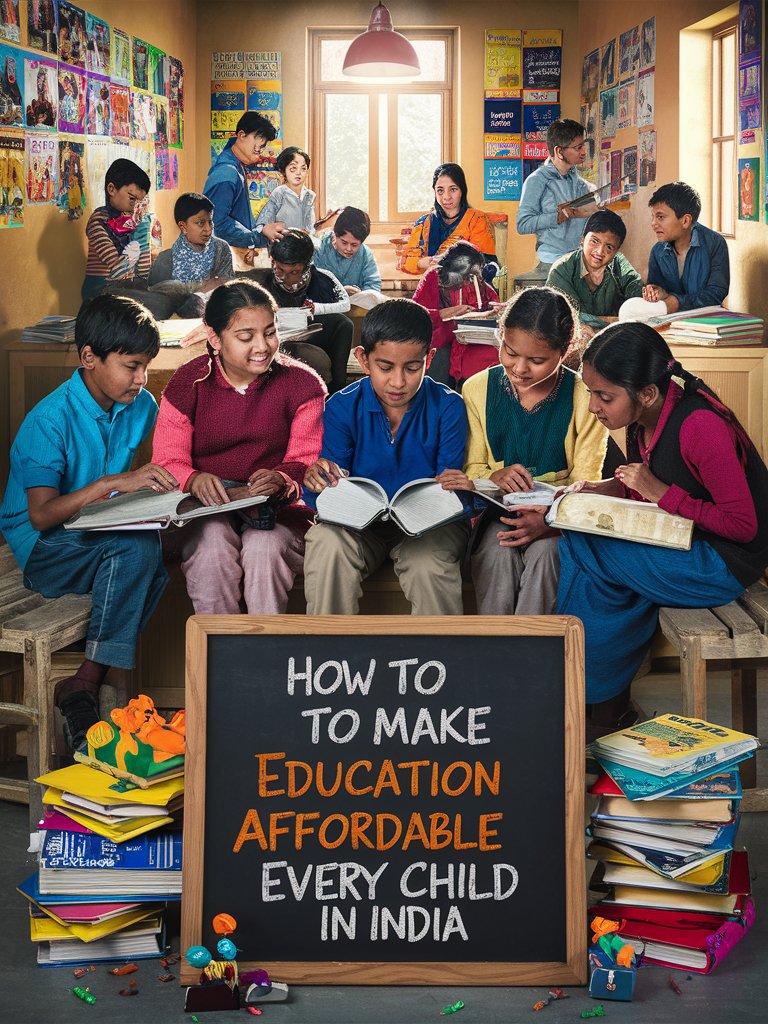
India’s Struggle with Primary Education
India is a country with a rich history and diverse culture, yet it faces significant challenges in providing primary education to all its children. Despite various government initiatives, millions of children still lack access to quality education. Ensuring that every child in India receives an education is vital for the nation’s future, but numerous barriers stand in the way.
Reasons Behind the Struggle
- Poor Condition of Government Schools
Many government schools in India suffer from poor infrastructure. Classrooms often lack proper seating, clean drinking water, and sanitation facilities. Additionally, there is often a shortage of qualified teachers. These conditions make it difficult for children to learn and for parents to feel comfortable sending their kids to school, especially in rural areas. - Income Inequality
A large portion of India’s population lives in poverty. For many families, even the minimal costs associated with schooling—like uniforms, books, and transportation—can be prohibitive. These financial constraints force many children to drop out of school to work and support their families instead. - Gender Disparity
Gender inequality is another significant issue affecting education in India. In many communities, girls are less likely to attend school compared to boys. Cultural norms and economic pressures often lead families to prioritize boys’ education, believing that investing in girls’ education is less beneficial. - Lack of Awareness
In numerous rural and remote areas, parents may not understand the importance of education. This lack of awareness contributes to low enrollment and high dropout rates. Many parents believe that their children, particularly girls, are better off contributing to household chores or working. - Quality of Education
Even when children attend school, the quality of education they receive can be poor. Outdated curricula, rote learning methods, and untrained teachers hinder effective learning. As a result, children often fail to gain the knowledge and skills they need to succeed.
Government Policies to Make Education Affordable
The Indian government has implemented several policies aimed at making education more accessible and affordable. These include:
- Sarva Shiksha Abhiyan (SSA)
Launched in 2001, this program aims to universalize elementary education by improving school infrastructure, providing free textbooks, and ensuring trained teachers in every classroom. - Mid-Day Meal Scheme
This initiative provides free lunches to children in government schools, encouraging attendance and addressing malnutrition, which can hinder learning. - Right to Education (RTE) Act
Enacted in 2009, the RTE Act mandates free and compulsory education for children aged 6 to 14. It also outlines the standards for school infrastructure, teacher qualifications, and student-teacher ratios.
Challenges in Policy Implementation
Despite these policies, many initiatives fail due to poor implementation and corruption.
- Lack of Proper Implementation
Policies often fall short at the implementation stage. Schools may not receive the resources promised, and infrastructure projects might be delayed or abandoned. Teacher shortages persist, and many educators remain untrained. - Corruption
Corruption further exacerbates these problems. Funds intended for school improvements and educational resources sometimes do not reach their intended destinations. This misuse of resources undermines efforts to provide quality education to all children.
How NGOs Support the Cause
Non-governmental organizations (NGOs) have stepped in to support the cause of education, working at the grassroots level to address these challenges.
- Campaigning and Awareness Programs
NGOs conduct awareness campaigns in villages and remote areas to highlight the importance of education. These campaigns educate parents about the long-term benefits of schooling for their children, helping to change cultural attitudes and encourage enrollment. - Establishing Learning Centers
Many NGOs set up learning centers in underserved areas. These centers provide a safe and supportive environment for children to learn. They often offer remedial classes and extracurricular activities that government schools may lack. - Providing Infrastructure and Resources
NGOs work to improve school infrastructure by building classrooms, installing sanitation facilities, and providing essential learning materials. They also ensure that children have access to textbooks, uniforms, and other necessities. - Teacher Training and Support
To address the shortage of qualified teachers, NGOs often provide training programs for educators. These programs focus on modern teaching methods and child-friendly approaches to make learning more effective and enjoyable.
Spectra Organization’s Efforts
One such NGO making a significant impact is Spectra Organization. Spectra is dedicated to educating thousands of children at their centers in Alwar, Rajasthan, and parts of Haryana.
- Educational Centers
Spectra has established educational centers that provide quality education to children from low-income families. These centers offer a conducive learning environment with proper infrastructure, trained teachers, and essential learning materials. - Skill Development Programs
In addition to formal education, Spectra runs skill development programs. These programs teach children and young adults practical skills that can help them secure better job opportunities in the future. - Community Involvement
Spectra actively involves the community in its initiatives. By working closely with parents and local leaders, Spectra ensures that their programs are well-received and effective. - Health and Nutrition
Recognizing the link between health and education, Spectra also provides health and nutrition programs. These programs ensure that children are healthy and well-fed, which improves their ability to learn and succeed.
Join Us to Make a Difference
Spectra Organization is making a real difference in the lives of thousands of children, but there is still much work to be done. You can help us ensure that every child in India has access to affordable and quality education. Join us in our mission by visiting our website and donating. Together, we can build a brighter future for India’s children.
Click here to visit our website to learn more and donate.